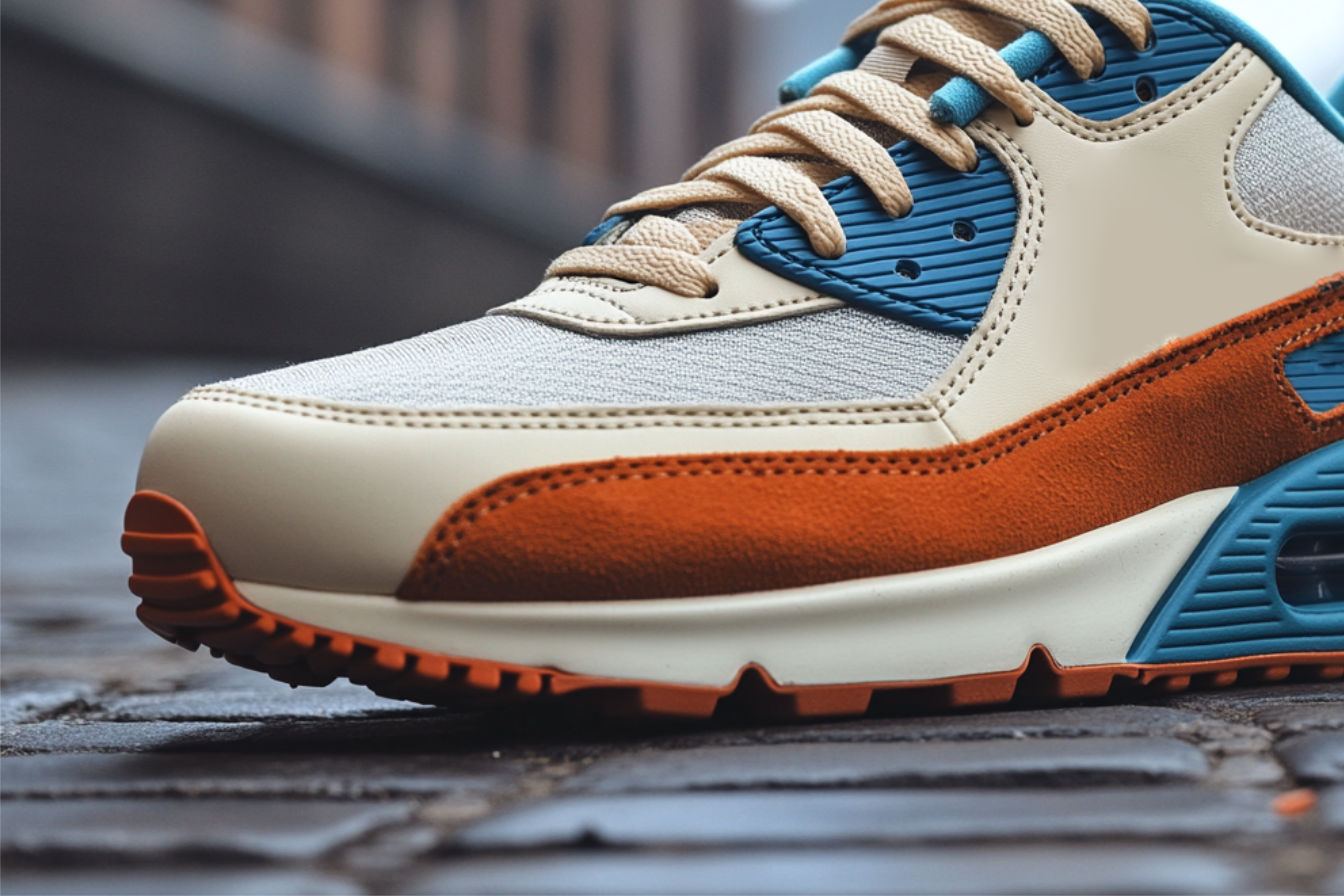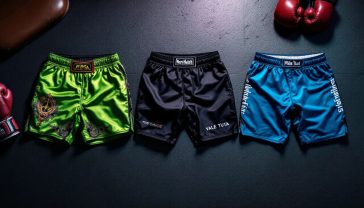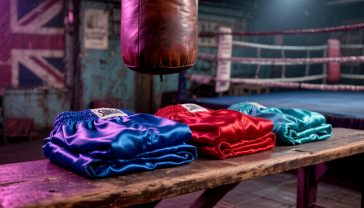Nike Air Max History: From a Wild Idea to a British Streetwear Staple
From Parisian architecture to London’s grime scene, this is the complete story of the Nike Air Max and its journey to becoming a British cultural icon.

This post may contain affiliate links. If you make a purchase through these links, we may earn a commission at no additional cost to you.
It all started with a building. Not a shoe, a swoosh, or even a runner. A building in Paris, of all places. In the mid-1980s, a clever chap named Tinker Hatfield, who was trained as an architect, not a shoe designer, visited the Centre Pompidou. He saw its radical design—all its inner workings like pipes, lifts, and stairs were on the outside for everyone to see. It was bold, a bit bonkers, and it sparked an idea that would change trainers forever.
Hatfield, who worked for a then-up-and-coming sports brand called Nike, thought, “What if we did that with a shoe?” What if, instead of hiding the clever cushioning tech inside the foam, we put it on display? It was a wild pitch. Most people at Nike thought he was mad. They feared a shoe with a hole in the side would look weak and might pop. But Hatfield, backed by a few believers, pushed on.
The result? The Nike Air Max 1, which landed in 1987. It didn’t just have Nike’s famous ‘Air’ cushioning; it had a window in the heel to show it off. It was like looking under the bonnet of a car. For the first time, you could see the technology. This wasn’t just a running shoe anymore; it was a statement. And that single, simple idea kicked off a dynasty of trainers that would stomp its way from American running tracks to the very heart of British culture, becoming the unofficial uniform for entire generations of music lovers, rebels, and style leaders. This is the story of how a shoe with a hole in it became a legend.
What Exactly Is Nike Air? The Bouncy Secret in the Sole
Before we dive into the history, let’s get our heads around the main event: Nike Air. It’s the secret sauce, the magic ingredient that makes an Air Max an Air Max. But what is it?
Think of it like a tough, flexible bag filled with pressurised gas. This bag, known as the Air unit, is embedded inside the midsole of the shoe, usually under the heel and sometimes the forefoot too. When you walk or run, your foot squashes the Air unit. The gas inside compresses, absorbing the shock, a bit like a tiny, high-tech trampoline. Then, as you lift your foot, the bag springs back to its original shape, ready for the next step.
It’s a beautifully simple idea, but it was revolutionary.
From Space Tech to Foot Tech
The idea for Nike Air didn’t come from a shoe designer. It came from a former NASA engineer called Marion Frank Rudy. Back in the 1970s, Rudy was working on the Apollo space missions, and he knew a thing or two about cushioning. He figured out a way to capture dense gases inside a rubber membrane—a process used for making astronauts’ helmets.
He thought this “airbag” technology could be perfect for shoes. He pitched it to a bunch of companies, but they all turned him down. They didn’t get it. Then, in 1977, he walked into Nike’s headquarters. Phil Knight, Nike’s co-founder, took the prototypes for a run and was immediately convinced. The cushioning was incredible.
The first shoe to feature this hidden tech was the Nike Tailwind in 1978. It was a hit with serious runners, but nobody knew the Air was there. It was a secret, hidden away inside the foam. For almost a decade, Nike Air was a feeling, not a feature you could see. It took Tinker Hatfield and his trip to Paris to turn this invisible innovation into a cultural phenomenon.
The Revolution Begins: The Air Max 1 (1987)
The original. The one that started it all. When the Air Max 1 dropped on 26 March 1987, the trainer world had never seen anything like it. It wasn’t just the visible Air bubble that made it a game-changer; the whole design was loud and proud.
Tinker Hatfield chose a blazing University Red and white colourway that you couldn’t miss. In an era when running shoes were mostly boring blues and greys, the Air Max 1 screamed for attention. It was a deliberate choice. Hatfield wanted the shoe to be a complete package of radical ideas. He wasn’t just selling a shoe; he was selling a concept.
The TV advert that launched it was just as revolutionary. Instead of showing athletes, it used The Beatles’ song “Revolution,” a track that had never been used in an ad before. It was a bold, expensive move that signalled Nike’s ambition. The message was clear: this shoe isn’t just new; it’s a rebellion against the ordinary.
Of course, not everyone was on board. Retailers were worried the bubble would burst (it wouldn’t, the urethane bag was incredibly tough). Runners were sceptical. But the shoe found its true home not on the track, but on the street. Young people, particularly in Europe, were drawn to its futuristic look. It was different, a bit weird, and it stood out. It was the perfect shoe for a generation that wanted to make its own rules.
The Golden Era: Air Max in the 1990s
The 90s were the wild west for trainer design, and the Air Max line was leading the charge. With the concept of visible Air now proven, Nike’s designers had one goal: more. More Air, more colour, more attitude. Each new release felt like an event, pushing the boundaries of what a shoe could be.
The Air Max 90: An Icon Is Born (1990)
If the Air Max 1 was the revolution, the Air Max 90 was the shoe that cemented the dynasty. Originally called the Air Max III, this was Tinker Hatfield’s masterpiece. It was bigger, bolder, and more aggressive than its predecessor.
Everything about the 90 was designed to shout. The Air unit was larger, and Hatfield surrounded it with a vibrant, chevron-like panel he called the “loveheart.” The launch colourway, a searing “Infrared” (which was actually Hyvent Orange, but the nickname stuck), was pure energy. It made the Air bubble pop even more.
The shoe’s shape was also more dynamic. It had a chunkier silhouette that sloped forward, making it look fast even when it was standing still. It was this powerful stance that made it a cultural icon. In the UK, the Air Max 90 was adopted by the burgeoning rave and hardcore music scenes. Its comfort was perfect for all-night dancing, and its loud design matched the vibrant, expressive energy of the music. It became a staple, a piece of essential rave gear, and its status as a British streetwear king was sealed.
The Air Max 180: A Whole New View (1991)
Nike’s next trick was to take the Air bubble even further. With the Air Max 180, they created an Air unit that was visible from 180 degrees. For the first time, the airbag touched the ground directly, with no foam between it and the outsole.
This was a massive technical challenge. To show it off, the launch campaign was a collaboration with legendary artists, including cartoonists and film directors. It was a sign that Nike knew the Air Max was more than just a sports shoe; it was a piece of design, a canvas for creativity.
While it didn’t quite hit the commercial heights of the 90, the 180 became a connoisseur’s choice. Its sleek profile and unique “Ultramarine” colourway made it a favourite among those in the know. In the UK, it was Dizzee Rascal who would later immortalise the 180, featuring it on the cover of his groundbreaking 2003 album, Boy in da Corner, connecting the shoe to the birth of grime.
The Air Max 93: The Bubble Butt (1993)
The quest for more Air continued. The Air Max 93 (nicknamed the “Bubble Butt” for obvious reasons) took inspiration from the curved heel of a plastic milk jug. This led to the creation of the first-ever 270-degree Air unit, wrapping all the way around the heel.
It also introduced a new material: a snug, stretchy neoprene inner sleeve that hugged the foot like a sock. This focus on comfort, combined with the huge Air bubble, made the 93 feel incredibly plush. Its subtle “Dusty Cactus” colourway was a departure from the louder designs of the past, but the sheer size of the Air unit spoke for itself.
The Air Max 95: The One That Changed Everything (1995)
By the mid-90s, the Air Max was a hit, but the formula was becoming familiar. Nike needed to shake things up again. They turned to a young designer, Sergio Lozano, who had previously been working on their ACG (All Conditions Gear) outdoor range. What he came up with was so radical, so unlike anything that had come before, that it nearly didn’t get made.
The Air Max 95 was a monster of a shoe. Lozano drew inspiration from human anatomy. The layered side panels mimicked muscle fibres, the nylon eyelets were the ribs, and the midsole was the spine. It was the first Air Max to feature visible Air in the forefoot as well as the heel, providing cushioning along the entire length of the foot.
And then there was the colour. The launch “Neon” colourway was insane. It started with a black sole—a practical choice to hide dirt—and faded up through shades of grey to white, punctuated by hits of electric neon yellow. This gradient design was unheard of. The shoe also did away with the big Nike swoosh, using a tiny, subtle one near the ankle.
In Britain, the 95 (or the “110,” as it was nicknamed because of its £110 price tag) became a phenomenon. It was expensive, flashy, and had an almost menacing look. It was the ultimate status symbol on the streets of London, Liverpool, and Manchester. Its adoption by the UK garage and jungle scenes cemented its reputation. It was the shoe you wore to show you’d arrived. It was so desirable that it became notoriously linked with crime, with stories of “110s” being stolen right off people’s feet. The Air Max 95 wasn’t just a trainer; it was a cultural artefact that defined an era of British youth culture.
The Air Max 97: The Silver Bullet (1997)
How do you follow up the 95? You go even bigger. The Air Max 97, designed by Christian Tresser, was a vision of the future. Inspired by the sleek, high-speed look of Japanese bullet trains, the 97 was a flash of metallic silver. Its upper was covered in flowing, reflective lines that seemed to ripple with movement.
But the real showstopper was the sole. The 97 was the first shoe to feature a full-length Air unit, running from heel to toe. This was the holy grail for Nike’s designers—a single, uninterrupted cushion of Air. It looked like something straight out of a sci-fi film.
In Italy, the 97 became a cultural obsession, adopted by everyone from clubbers to high-fashion models. But it also found a loving home in the UK. Its futuristic, almost alien design resonated with the forward-thinking sounds of UK garage and speed garage. The “Silver Bullet” was the perfect footwear for a scene that was all about sleek, sophisticated, and futuristic vibes. It was clean, technical, and ridiculously comfortable—the ultimate shoe for a night out.
The UK’s Love Affair: How Air Max Became British
You can’t tell the story of the Air Max without talking about Britain. While the shoes were designed in America, they were adopted and given their cultural meaning on the streets of the UK. From the raves of the early 90s to the birth of grime in the early 2000s, Air Max has been the footwear of choice for some of Britain’s most important subcultures.
Ravers and the Air Max 90
In the late 80s and early 90s, a new youth movement was sweeping the nation: rave culture. Thousands of young people gathered in fields and warehouses to dance all night to the sounds of acid house and hardcore. They needed footwear that was comfortable, durable, and looked good under the strobe lights. The Air Max 90, with its chunky sole and flashes of “Infrared,” was the perfect fit. It was a shoe built for energy and expression, a perfect match for the loved-up, euphoric spirit of the rave scene.
Jungle, Garage, and the Air Max 95
As the 90s progressed, the music got harder and faster. The dark, complex breakbeats of jungle and the smooth, stylish rhythms of UK garage took over the clubs and pirate radio stations. This new music demanded a new look. The Air Max 95 was it.
Its tough, aggressive design and high price tag made it a status symbol. It was a way of saying you were serious, that you were part of the scene. In London, the 95 became synonymous with crews in the garage scene, from So Solid Crew to the Pay As U Go Cartel. It was part of the uniform: a Moschino jacket, Avirex leather, and a fresh pair of 110s.
Grime and the Air Max BW & 180
By the early 2000s, a new sound was bubbling up from the council estates of East London: grime. Raw, energetic, and uniquely British, grime was the voice of a new generation. And that generation had its own favourite Air Max models.
The Air Max BW (Big Window) from 1991, with its massive heel bubble and iconic “Persian Violet” colourway, was a huge grime staple. Its tough, no-nonsense look was perfect for the gritty energy of the music. Grime legend Dizzee Rascal was famously a huge fan.
But it was another, more obscure model that became truly synonymous with grime’s birth. The cover of Dizzee’s debut album, Boy in da Corner, featured the man himself in a tracksuit, sitting in front of a stark black and yellow background, wearing a pair of Air Max 180s. That single image cemented the 180’s place in British music history, linking it forever to one of the most important cultural movements the UK has ever produced.
The 21st Century and Beyond: New Tech, New Icons
After the creative explosion of the 90s, the Air Max line continued to evolve, embracing new technologies and aesthetics while always paying respect to its history.
The Air Max 360: Walking on Air (2006)
In 2006, Nike finally achieved the dream that began with the Air Max 1: a shoe with no foam in the midsole at all. The Air Max 360 featured a completely visible, 360-degree Air unit. You were, quite literally, walking on air. It was a landmark moment in the history of the technology, the culmination of two decades of innovation.
The Rise of Hybrids and Retros
As the 2000s wore on, trainer culture became obsessed with the past. Nike began re-releasing classic models in their original colourways, known as “retros.” The demand was huge. A whole new generation was now able to get their hands on the “Infrared” 90s and “Silver Bullet” 97s that they had only heard about.
This love for the classics also led to the creation of “hybrids,” where designers would mix and match elements from different Air Max models. It was a playful way to celebrate the rich history of the line.
Vapormax: The Next Chapter (2017)
Just when it seemed like the Air Max story had come full circle, Nike ripped up the rulebook again. The Vapormax was as radical a leap forward as the Air Max 1 was in 1987.
The design did away with the traditional midsole and outsole entirely. Instead, the upper sat directly on top of a series of hollow, piston-like Air pods. It was an incredibly complex piece of engineering that took seven years to perfect. The result was a shoe that felt like nothing else—unbelievably light and bouncy. Its futuristic, otherworldly look made it an instant hit with the high-fashion crowd, proving that even after 30 years, the Air Max line could still shock and surprise.
The Enduring Legacy: Why Air Max Still Matters
So why are we still talking about a 35-year-old running shoe? Because the Nike Air Max is more than just a trainer. It’s a design icon, a cultural symbol, and a piece of British history.
It represents a moment when a company was brave enough to do something completely different. That little window in the heel was a victory for creative, rebellious thinking. It told a story of innovation that everyone could understand just by looking at it.
For decades, the Air Max has been the chosen footwear for musicians, artists, and rebels across the UK. It has been on dancefloors, in music videos, and on album covers. Each model tells a story about a specific time and place in British culture, from the fields of rave to the streets that birthed grime.
Today, new models continue to push the boundaries, while the classics remain as popular as ever. Wearing a pair of 90s or 95s is like wearing a piece of history. It connects you to the movements and the music that shaped a generation. The story that started with a quirky building in Paris is still being written, one bouncy, bubble-soled step at a time. And in Britain, it’s a story that’s woven into the very fabric of our streets.
Further Reading
For those who want to dive even deeper into the world of Air Max and trainer culture, here are some highly respected resources:
- Sneaker Freaker: The definitive bible for trainer enthusiasts, with incredible archives and deep-dive articles.
- The Business of Fashion (BoF): Offers sharp analysis of the trainer market and its cultural impact from a fashion industry perspective.
- Hypebeast: A key destination for the latest drops, news, and cultural stories in the world of streetwear.
- Complex Sneakers: Known for its lists, interviews, and the brilliant ‘Sneaker Shopping’ YouTube series, which often features UK artists.






